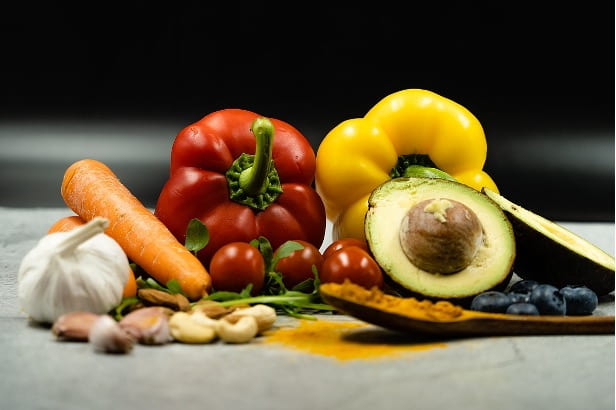Valentina Fernandez ‘22, Biological Sciences, Spring 2021
Figure: A new study by the University of California Riverside suggests that childhood eating habits may have a long-term impact on the health of your gut as an adult. (Source: Flickr, Formulate Health)
Recently, the microbiome has emerged as a strong topic of interest for many scientists. Because animals and bacteria have coevolved over time, they have forged complex and mutually beneficial relationships as host and symbiont. The human gastrointestinal tract is inhabited by a plethora of different bacteria. To put things into perspective, the gut microbiome expresses 3.3 million prokaryotic (bacterial) genes, while the human body expresses only 20,000 of its own (NIH, 2012). The human gut microbiome is composed of four main phyla (groups) of bacteria: Firmicutes, Bacteriodetes, Actinobacteria, and Proteobacteria (“Gut Microbiome – an Overview,” n.d.). The bacteria have a variety of functions; they break down nutrients from the food we eat, regulate metabolism, and provide enhanced immunity through a variety of complex mechanisms. In addition, many of the fermentation byproducts such as acetate, propionate, and butyrate in the gastrointestinal tract provide energy for epithelial cells and protection against pathogens (“Gut Microbiome – an Overview,” n.d.)
The two main factors that impact the human gut microbiome of humans are diet and exercise. Interestingly, gut bacteria can be altered in as little as twenty-four hours, with some studies showing how a period of consumption high in fat and sugar leads to a reduction in bacterial species in the gut (David et al., 2014). A high-fat diet has been shown to alter the rates of amino acid metabolism, as well as the enzymes involved in the oxidative stress response (McNamara et al., 2021). Oxidative stress is a physiological state in which there is an excessive amount of reactive oxygen species (ROS) in cells and tissues, which ultimately causes a chronic inflammatory response and an excessive upregulation of the immune system. This can lead to a multitude of serious diseases (Pizzino et al., 2017).
The link between early-life diet and the microbiome of newborn babies is clear: babies that are given breastmilk have microbiomes with higher bacterial diversity in comparison to those fed formula (Sprockett et al., 2018). Still, the connection between the long-term effects of a childhood diet on the microbiome has long remained unclear. UCR physiologist Theodore Garland sought to address the impact of childhood diet in his study.
In the experiment, Garland evaluated the long-term impact that a “Western diet” (one high in fat and sugar) and exercise would have on the adult microbiome of mice (the test subjects). Because mice are biologically very similar to humans, they are reasonably good models. The study examined a total of 165 juvenile male mice originating from two different lines. First, the High Runner (HR) lines, which were selectively bred for high voluntary wheel-running behavior (more likely to exercise voluntarily), and then the four control (C) lines, which were non-selected (normal, generic mice). The HR mice differed phenotypically from the control mice in various additional ways: first, they had higher levels of both activity and food consumption compared to the control (C) lines, and second, they had an increased body temperature when active. These three factors were considered in thinking about effects on the gut microbiome. The HR mice were divided into four sub-groups as follows:
- Group #1: Fed standard diet, no access to the running wheels.
- Group #2: Western diet, no access to the running wheels.
- Group #3: Fed Standard diet, access to the running wheels.
- Group #4: Fed Western diet, access to the wheels.
The Standard Laboratory Rodent Diet (SD) contained 4% kJ fat while the Western diet (WD) contained 42% kJ fat. The four groups of juvenile mice were exposed to these nutrition habits for three weeks, enough time to allow them to reach sexual maturity. After the initial three weeks, all groups of mice were placed on an 8-week washout period (equivalent to about 6 human years) in which all four groups were fed SD and access to the wheel (source of exercise) was halted.
Juvenile wheel running, essentially the amount of exercise each mouse performed, was measured by using sensors attached to the wheel to record the number of revolutions per 1-min intervals during a 23 hour measurement period. Juvenile food consumption, on the other hand, was recorded and converted to caloric intake as the diet of each sub-group differed in energy content. Further, the weights of each mouse were measured at the start and end of each week.
The results of this experiment indicate that juvenile diet and exercise patterns do impact the microbiome of adults in the long-term, even after the substantial washout period.
Differences in gut bacteria among the two populations of mice were determined through use of the Shannon Diversity Index, which reflects both the number of different species and the abundance of each, and by sequencing the hypervariable internal transcribed spacer (ITS) region of the bacterial gut community. Internal transcribed spacers (ITS)-PCR is a sequencing technique that facilitates the analysis of the non-coding fragments of RNA located between structural ribosomal RNAs (da Cunha, 2019). This technique is frequently used to identify distinct bacterial strains and is an easy way of doing so since different bacteria each have a single, distinct ITS (da Cunha, 2019). This method tested for adult gut microbiome richness as well as relative abundance.
This experiment revealed the negative effects a Western diet may have on the host’s gut microbiome. For one, the Western diet increased intestinal permeability and inflammation of the gut environment. In addition, the Western diet has been shown to decrease the relative abundance of Bacteroidetes, while increasing the relative abundance of Firmicutes. Finally, the Western diet was found to reduce the abundance of Muribaculum intestinale bacteria, which, as a newly cultured species, has not yet been studied in depth. In other experiments, enriched amounts of M.intestinale have correlated with increased mitochondrial metabolism in skeletal muscle, suggesting that M.intestinale is an exercise-associated species of bacteria.
While the results to this experiment are credible, further studies need to be done to confirm and expand upon the results. The takeaway, as Garland says, is that “ You are not only what you eat, but what you ate as a child!”
References
Belizário, J. E., & Napolitano, M. (2015). Human microbiomes and their roles in dysbiosis, common diseases, and novel therapeutic approaches. Frontiers in Microbiology, 6, 1050. https://doi.org/10.3389/fmicb.2015.01050
da Cunha, M. de L. R. de S. (2019). Molecular Biology in Microbiological Analysis. In Reference Module in Food Science (p. B9780081005965230000). Elsevier. https://doi.org/10.1016/B978-0-08-100596-5.22935-1
David, L. A., Maurice, C. F., Carmody, R. N., Gootenberg, D. B., Button, J. E., Wolfe, B. E., Ling, A. V., Devlin, A. S., Varma, Y., Fischbach, M. A., Biddinger, S. B., Dutton, R. J., & Turnbaugh, P. J. (2014). Diet rapidly and reproducibly alters the human gut microbiome. Nature, 505(7484), 559–563. https://doi.org/10.1038/nature12820
Gut Microbiome—An overview | ScienceDirect Topics. (n.d.). Retrieved February 24, 2021, from https://www.sciencedirect.com/topics/medicine-and-dentistry/gut-microbiome
Matsumoto, M., Kibe, R., Ooga, T., Aiba, Y., Kurihara, S., Sawaki, E., Koga, Y., & Benno, Y. (2012). Impact of Intestinal Microbiota on Intestinal Luminal Metabolome. Scientific Reports, 2(1), 233. https://doi.org/10.1038/srep00233
McNamara, M. P., Singleton, J. M., Cadney, M. D., Ruegger, P. M., Borneman, J., & Garland, T. (2021). Early-life effects of juvenile Western diet and exercise on adult gut microbiome composition in mice. The Journal of Experimental Biology, jeb.239699. https://doi.org/10.1242/jeb.239699
Pizzino, G., Irrera, N., Cucinotta, M., Pallio, G., Mannino, F., Arcoraci, V., Squadrito, F., Altavilla, D., & Bitto, A. (2017). Oxidative Stress: Harms and Benefits for Human Health. Oxidative Medicine and Cellular Longevity, 2017. https://doi.org/10.1155/2017/8416763
University of California, Riverside. (2021). Childhood diet has lifelong impact: Effects of unhealthy food followed young mice into adulthood. ScienceDaily. https://www.sciencedaily.com/releases/2021/02/210203090458.htm


Leave a Reply